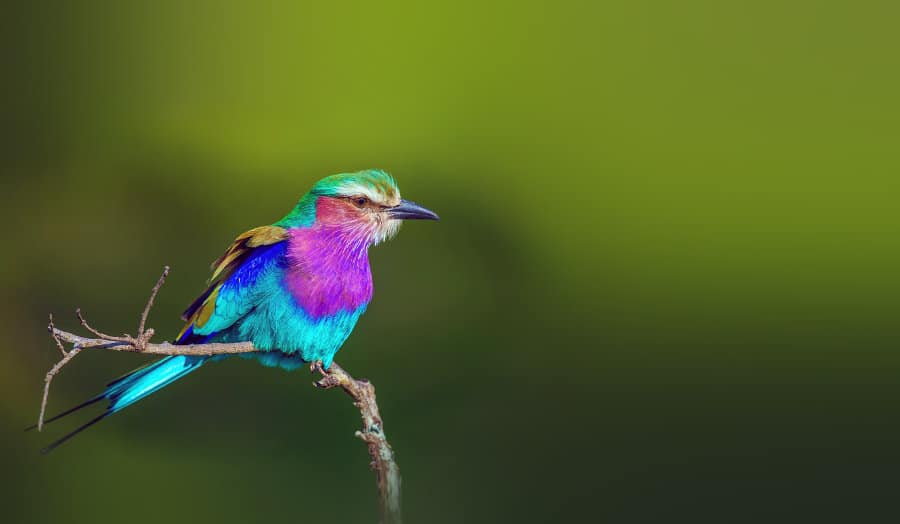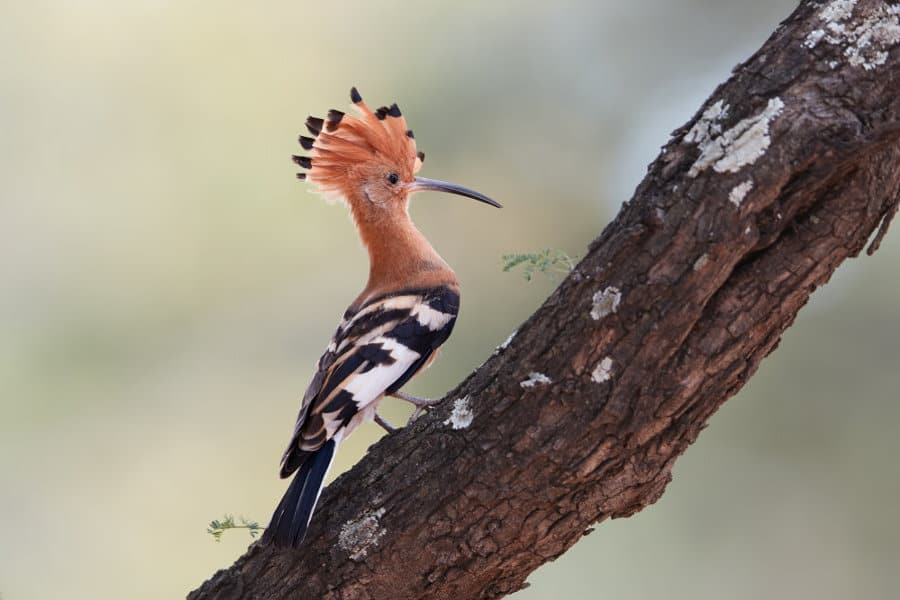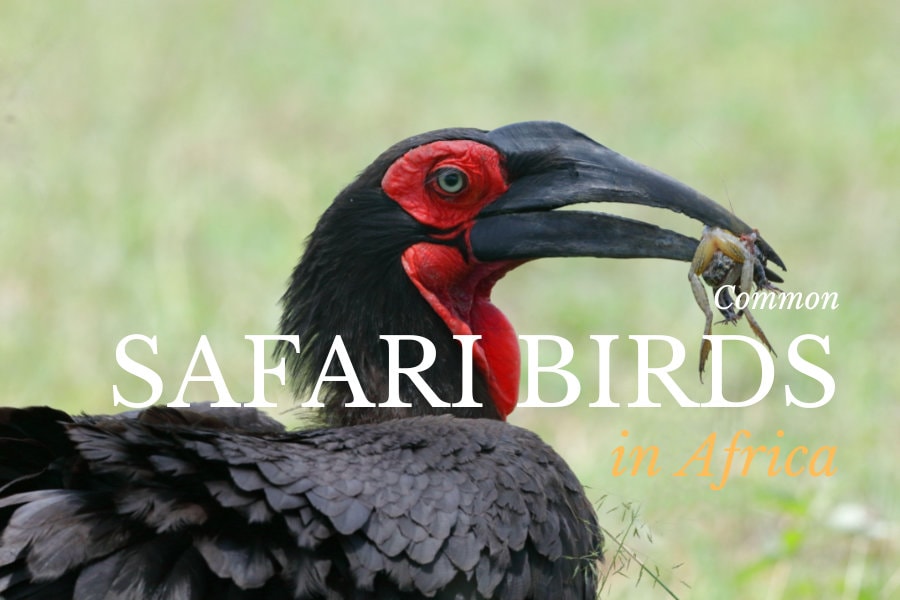Do you know many African grey parrot facts? If so, you’ve probably heard of these birds as pets. But, as the name suggests, these chatty companions originally come from Africa.
Deep in the rainforests, far from any cage, these amazingly intelligent animals live out their lives. Though we know a lot about captive individuals, the lives of wild African greys remain something of a mystery.
So, whether you’re planning a trip to see this elusive species, or just want to learn more about them, this is a great place to start.
Here are 9 cool African grey parrot facts, to help you get to know this brilliant bird.
1. There Are Two Species of Grey Parrots in Africa
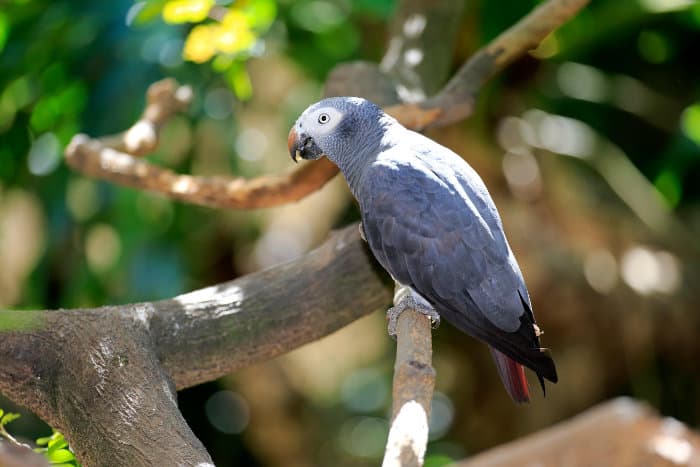
When people refer to an ‘African grey parrot’ they could be talking about one of two species – the Congo African grey, or the Timneh African grey.
The Timneh African grey parrot (or simply Timneh parrot) was once thought to be a subspecies of the Congo African grey parrot (otherwise known as the African grey parrot or just ‘grey parrot’).
The two look similar, but live in different places. Timneh parrots are slightly smaller and darker, though both species are intelligent, long-lived, and talkative!
2. African Grey Parrots Live in Tropical Forests
You’re bound to see plenty of wildlife on a Southern African safari, but you won’t spot these parrots lounging with lions.
The Congo African grey prefers the dense forests of Equatorial Africa, from the Ivory Coast to Kenya. The Timneh African grey also lives mainly in forests, but its range spans just a few West African countries. While both species are found in the Ivory Coast, they never meet in the wild. (Though captive species can interbreed.)
The Congo African grey is much more numerous, but both species have seen declines in much of their range.
3. The African Grey Parrot’s Diet is Nuts!
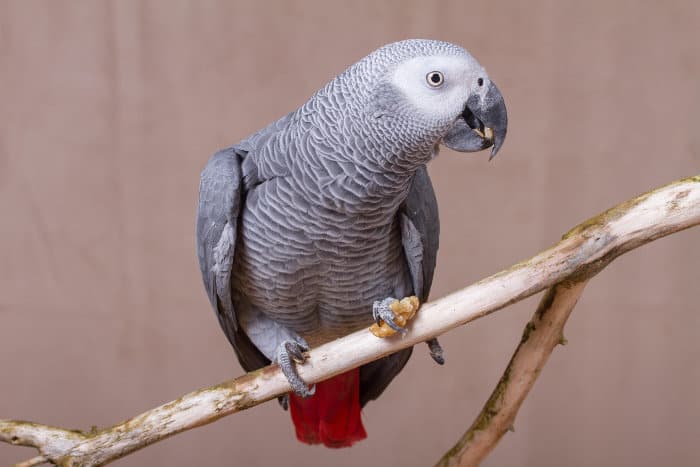
No, I don’t mean it’s crazy. I mean it is literally nuts – among other things.
The African grey parrot’s diet consists mainly of fruit, nuts, and seeds. They’ll supplement it with the odd insect or snail. They’re particularly fond of the fruit of the oil palm.
African greys feed in the trees, but they’ll also go down to the ground to ingest clay and soil for nutrients. Okay, maybe that is one of the strangest African grey parrot facts.
4. African Grey Parrots Have Very Long Lifespans
Many parrots are known for their longevity, and African greys are no exception. In the wild, an average African grey parrot lifespan is about 23 years.
Like many species, there’s a big difference between captive and wild life spans. Assuming the bird is healthy and properly cared for, captive African greys can live over 60 years. According to the Guinness Book of Records, one lived to 72!
5. African Grey Parrots’ Intelligence is Off the Charts

African grey parrots are famous for being the brainiacs of the bird world. It’s commonly said that they’re as intelligent as a three or four-year-old child!
An African grey parrot’s intelligence is one of the highest in the entire animal kingdom. Scientists think it’s on par with the smartest apes and cetaceans.
Parrots are known for their vocal abilities, and African greys are no exception. In fact, they’re some of the most talkative parrots. They have large vocabularies and both wild and captive individuals learn a variety of words and sounds.
It’s not just mimicking, though. There’s plenty of evidence that African greys understand many of the words they use.
6. There Are Several Famous African Grey Parrots
Animals don’t have a concept of ‘celebrity’ like we do. If they did, these individuals would be legendary figures. Yet they’ve reached a certain level of fame outside their own species.
Unlike many of our own celebrities, they’ve actually earned it through their achievements!
Alex the African grey parrot
Alex the African grey was a great ambassador for his species’ intelligence. While many birds are known for mimicry, Alex’s abilities showed creativity and reasoning skills.
Alex was bought at a pet shop, aged 1, by animal psychologist Irene Pepperberg. Over the next 30 years Pepperberg worked with Alex, ‘training’ his intelligence and carrying out many tests.
Alex had a vocabulary of over 100 words, but he could use them in context. He’d describe objects by their shape, colour, or material, and could do some simple addition. When he looked in a mirror, he asked ‘what colour?’ – becoming the first non-human animal to ask a question.
Einstein the African grey parrot

You may be proud of your accomplishments, but have you ever given a TED Talk? If not, then Einstein the African grey parrot has outshone you.
Unlike the famous scientist, this female parrot is more interested in language. Einstein lives in Knoxville Zoo, Tennessee. She works as part of an outreach program, teaching people about the natural world.
Einstein rose to fame on an Animal Planet game show, before starring in a 2006 TED Talk alongside trainer Stephanie White.
Another Einstein
Einstein the African grey has another famous avian namesake, this one from Texas. Given African grey parrots’ intelligence, it’s not surprising that Einstein is a popular name.
This parrot, a male, rose to fame after mimicking Matthew McConaughey’s signature catchphrase. Einstein now has over 100,000 subscribers on YouTube.
Alright, alright, alright!
7. They Like Rock Music (But Not Dance!)
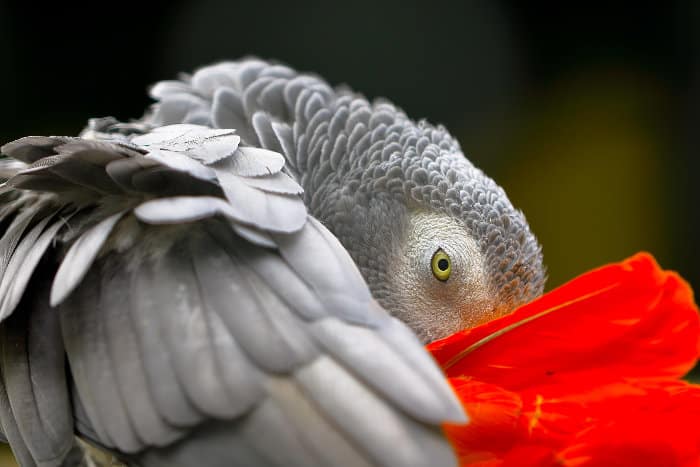
The more you learn about grey parrots, the more human-like they seem. It turns out that individuals even have their own musical preferences.
In one experiment, scientists monitored two African greys and played them different types of music. One preferred “soothing, middle-of-the-road” tunes while the other was more into “upbeat, modern pop.”
Both enjoyed rock and folk music and even danced along, bobbing their heads to the beat. As for electronic dance music? Forget it – this genre “left them both distressed.”
8. They’re an Endangered Species
This is more of a sad African grey parrot fact than a cool one. But it’s important to raise awareness of this parrot’s plight.
Because of the African grey’s intelligence and looks, it’s become a popular pet. The demand for this species means huge numbers of wild birds are taken for the pet trade each year.
Many die in transit, while others are kept in poor conditions or frequently rehomed. Such smart animals need constant attention and stimulation, something many people are not prepared for. For every success story like Alex or Einstein, there are many birds not looked after properly.
Hunting and habitat loss are two more major reasons why wild populations are plummeting. The parrots love palm oil fruit, but so do humans! Palm oil is in a huge percentage of everyday products, but it’s also responsible for massive deforestation around the world.
It’s not all bad news. Because of these factors, the African grey has been given extra protection in recent years. Global and domestic trade is now banned, though illegal trafficking still occurs.
More work still needs to be done to change attitudes and convince people that these beautiful birds deserve to be free.
9. They’re Highly Social and Mate for Life
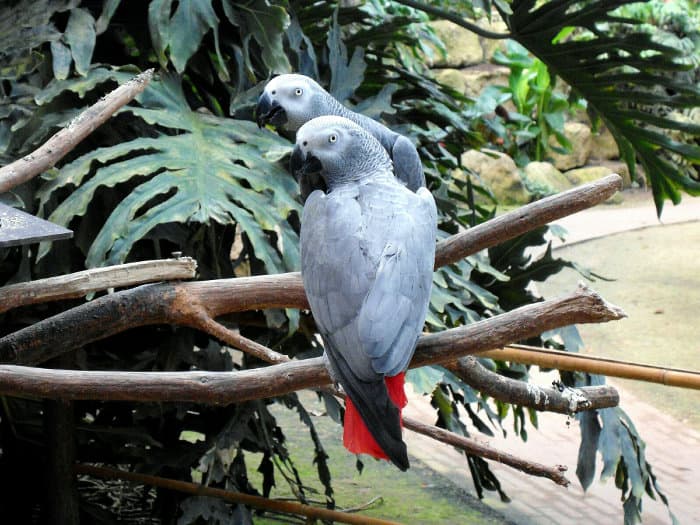
Lovebirds, the African grey’s smaller African relative, are known for their strong romantic bonds.
African greys are just as cute (and committed)! They’re monogamous and mate for life. Once sexually mature, at 3-5 years old, they’ll shack up in a hole in a tree with their partner.
After the female lays her eggs, she’ll stay in the nest while the male brings her food and keeps guard.
African grey parrots are also a very social species. They roost in large flocks, breaking into smaller groups to forage during the day. Older members of the flock help socialise younger birds and bring them up in the community.
…But they’re shy towards humans
Wild African grey parrots are shy and secretive towards humans. Can you blame them? In recent history, most interactions with humans have been negative.
Until more is done to crack down on illegal trade, these beautiful creatures will likely continue to be wary.
Admire the African Grey from Afar
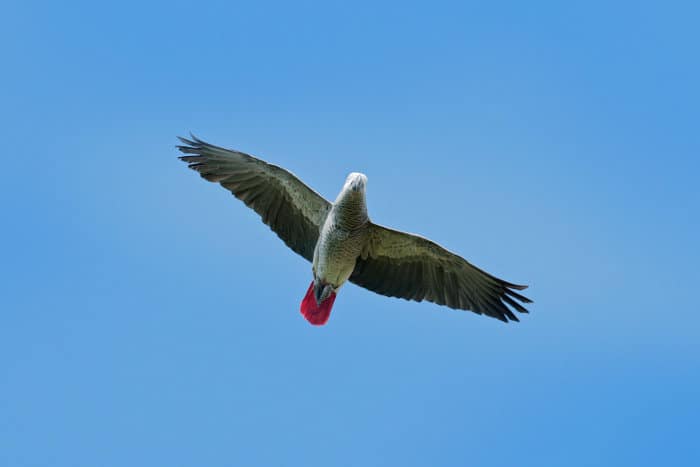
Now you’ve heard all these cool African grey parrot facts, you might be thinking they’d make a great companion.
If dogs and cats are a big commitment, an African grey is a whole other level. Looking after one would be like having a toddler who never ages but needs constant attention and stimulation. And might outlive you!
While some captive parrots are well-cared for, and many rescue birds are better-off in a good home, far more are forcefully taken from the wild. Buying from those who take wild birds from their habitat will only encourage them to continue.
As for wild grey parrots? You won’t see African greys on a South African savanna, but they do live in some of Africa’s wildlife tourism hotspots. Uganda and Rwanda are better known for gorilla trekking, but their rainforests also hide a host of birdlife. African grey parrots also live in Kenya and Tanzania.
Thinking of admiring these awesome avians in their natural habitat? Plan a custom safari and you might get a glimpse of these beautiful brainiacs!

